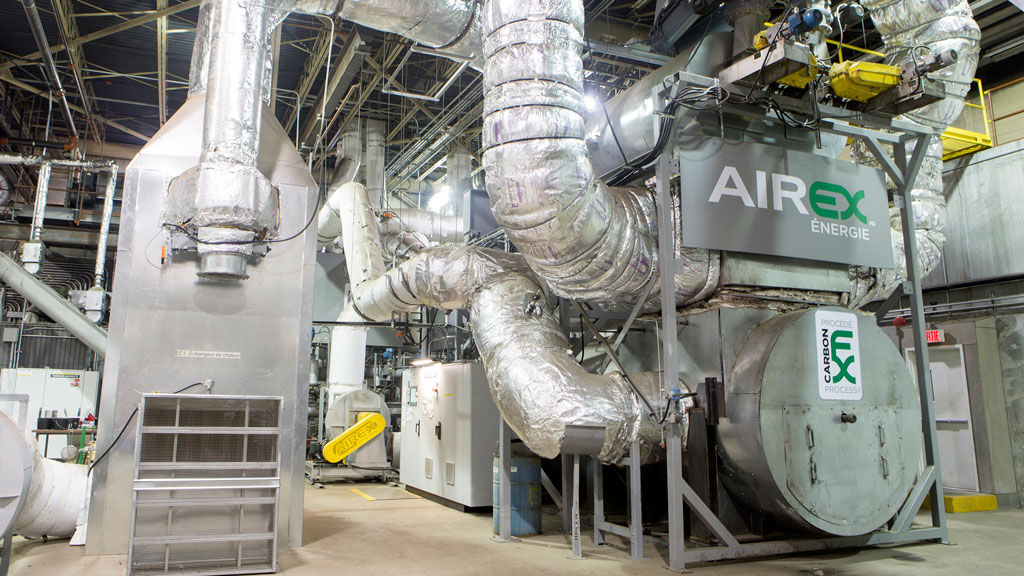Airex Energy and SUEZ Group have partnered to scale up the production of turning biomass residues into biochar, which can be used in a variety of applications in the construction industry.
The partnership, which has been in the works for about six months, is just the beginning, said Yvan Guay, vice-president of business development with Airex Energy.
The company is based in Becancour, Que.
The idea is to develop biochar production plants and the team is now looking to find sites and finetune the technology to be able to produce biochar on a larger scale.
“Our objective with the partnership is to bring it to an industrial scale level, to increase the capacity of the plant that we have now and dedicate the production to biochar only,” said Guay. “To produce biochar with SUEZ we will optimize the plant configuration for biochar production and we will at the same time increase production capacity.”
Biochar is being used in a variety of industries to reduce the carbon footprint as well as CO2 emissions from the atmosphere.
One of the benefits of biochar is it removes carbon from the atmosphere and sequesters it in soils for hundreds of years, Guay explained.
In terms of application in the construction industry, biochar can be used as filler material to improve strength development and water tightness of concrete.
When mixed with lime, biochar can be applied to the outside walls of a building by jet-spray technique as a substitute to extruded polystyrene foam insulation. It acts as an insulator and can help control humidity.
Because it is absorbent, biochar can also be used in the treatment of various wastewater, including industrial wastewater (heavy metals and organic pollutants), municipal wastewater (nitrogen and phosphorus), agricultural wastewater (pesticides and heavy metals) and stormwater (metals, organic matter and biological pollutants).
The team is looking for sites to house the new plants to increase biochar production. Biochar plants look very much like a wood pellet plant with lots of conveyors, silos and bins to store biomass.
“Our objective is not to put money into real estate, it’s to try, as much as possible, to equip the plant in an existing building, often a former sawmill site or any type of industrial site,” Guay noted. “It will be simpler to configure the plant within an existing building than to purchase the land and build a brand new building. It adds to the cost and it doesn’t add any value.”
The current plant can produce up to 3,000 tonnes of biochar annually but the plants that will be built through the partnership will have a capacity to produce between 10,000 and 30,000 tonnes per year.
“The larger the plant, the more efficient and therefore it will allow us to sell the product at a more competitive price,” Guay said. “Between now and 2030 the idea is to start with the first plant, validate the production capacity, validate the business model and after that copy and paste elsewhere in the world.”
SUEZ and Airex will use the CarbonFX torrefaction technology developed by Airex Energy, which transforms residual biomass such as bark, sawdust and waste wood into biochar, which is known as a stable carbon.
“We don’t go out in the forest to harvest trees and use these trees to create biochar, that’s not the intent,” Guay explained, adding torrefaction is not a new process and has been around for years. “The intent is to use residuals from sawmills or the wood processing industry that is very low value.
“For the first plant that we’re going to be building we plan to use bark,” he added. “We take the cheapest and lowest value residuals from forestry and turn it into a very high value product.”
The biomass is put under high heat without any oxygen.
“Therefore, it’s not burning it. The idea is to torrefy it,” said Guay. “When we subject the biomass to heat it does change the chemical composition of the biomass and it releases volatile organic compounds that contain a lot of energy. That energy is being recuperated by our process. Pre-dry the biomass at the input and heat it during the torrefaction process. It’s a very energy efficient system.”
Follow the author on Twitter @DCN_Angela.











Recent Comments